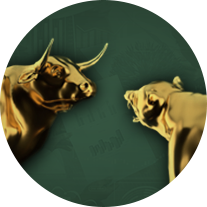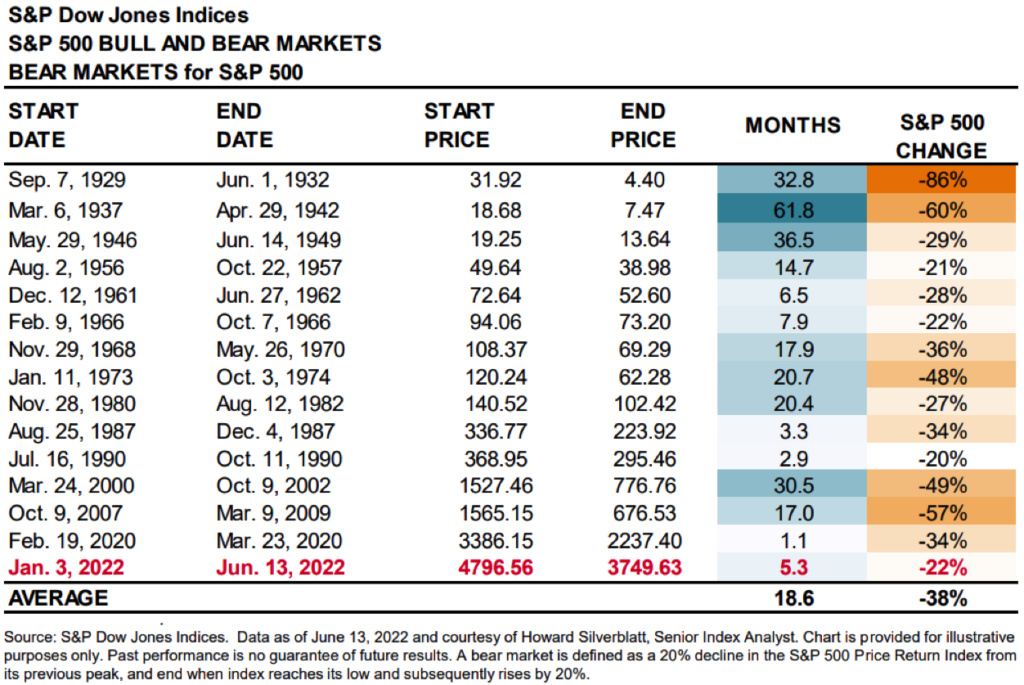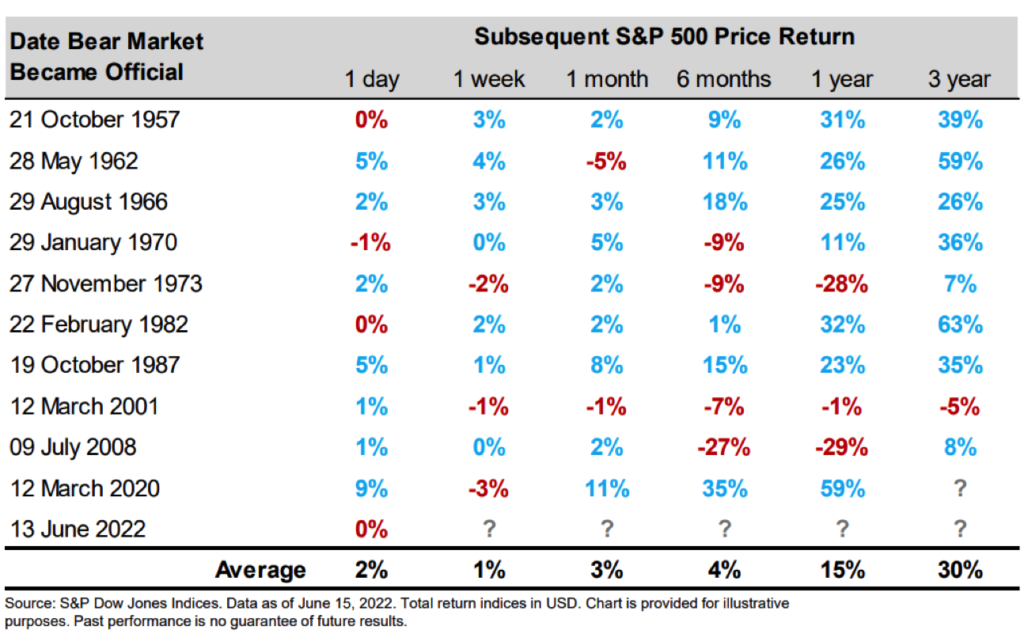Set Your Expectations: Dynamics of and Rebounds from Bear Markets
 A bear market for the benchmark S&P 500 came out of hibernation Monday (6/13) as the index breached the 20% loss level from its previous high January 3, 2022. Bear market conditions did not hibernate as long as usual this go around as only 22 months passed since the March 23, 2020, end of the prior, COVID-induced bear market, which only lasted a little longer than a month. This marked the shortest span between two bear markets since at least the Great Depression, as shown in the following table from S&P.
A bear market for the benchmark S&P 500 came out of hibernation Monday (6/13) as the index breached the 20% loss level from its previous high January 3, 2022. Bear market conditions did not hibernate as long as usual this go around as only 22 months passed since the March 23, 2020, end of the prior, COVID-induced bear market, which only lasted a little longer than a month. This marked the shortest span between two bear markets since at least the Great Depression, as shown in the following table from S&P.

On average bear markets last a little more than 18 months. The most recent edition of bear market-dom defines the 15th iteration since 1929 of the unwelcomed phenomenon. This translates to the S&P 500 spending a little less than 25% of the time since the start of the Great Depression under bear market conditions, including more often than not from 3Q29 through 2Q49.
Looking for a little less dark-and-gloomy: the 12 post-1957 bear markets lasted on average a little over 12 months. The average negative return for these bear markets was 33%. Overall since 1957 the S&P 500 spent about 20% of the time trading through bear territory.
The following table, also from S&P, proves even sunshinier. It offers data on the timing and magnitude of recoveries from bear market conditions since 1957. This table excludes the 1990 bear market as that one only touched the 20%-decline condition. For the resulting 11 bear market recovery observations, the S&P 500 averaged 1% a week later, 3% after a month, 4% 6 months later, 15% after a year, and 30% 3 years later.

Only the Tech Wreck of 2001 remained negative 3 years after the onset of bear market conditions, albeit via a relatively very shallow, single-digit-loss ongoing drawdown. Probably more important for sanity at this point in the cycle, however, is the fact that for 77% of the time periods in the table above, or 49 of its 66 observations, the S&P 500 closed above its bear market level. The whipsaw of 2008, though, which saw mild positivity for a month after the arrival of the bear only to lose more than 25% over the next 6 months, offers a painful dose of potential reality. If solutions fail to eliminate the root driver of the negative condition causing the bear market, investors will continue to sell equities.